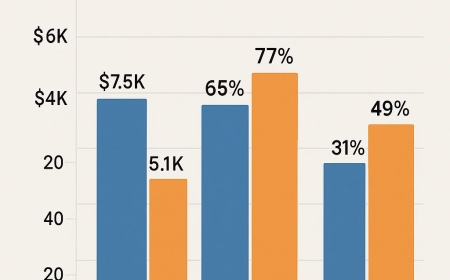The Legal Side of Insurance Policy Limit Lookup
They define the maximum amount an insurance company will pay for a claim under a particular policy.

They define the maximum amount an insurance company will pay for a claim under a particular policy. Whether dealing with auto accidents, medical malpractice, or general liability, knowing these limits can significantly impact legal strategies, settlement negotiations, and financial planning.
However, accessing this informationcommonly referred to as a "policy limit lookup"involves a complex interplay of privacy concerns, legal obligations, and jurisdictional nuances.
This article delves into the legal framework governing insurance policy limit lookups, the methods available for obtaining this information, and the implications for plaintiffs, defendants, attorneys, and insurers.
What are insurance policy limit lookups?
Insurance policy limit lookups are the monetary caps established in an insurance contract. They determine the maximum amount the insurer will pay for a particular claim or series of claims:
Per occurrence limit The maximum amount paid for a single incident.
Aggregate limit The total amount the policy will pay over a policy period.
For example, an auto liability policy might have a $100,000 per person and $300,000 per accident limit. If three people are injured, the most the insurer will pay is $300,000 total.
Why Policy Limits Matter
Policy limits often play a pivotal role in legal disputes, particularly personal injury and tort claims. For plaintiffs, knowing the defendants insurance limits helps assess whether pursuing litigation is financially viable or if settling early is prudent. For defense attorneys and insurers, revealing limits might signal potential exposure and influence how aggressively a case is defended or settled.
In practice, both sides may want to know the policy limits, but not all jurisdictions treat this information the same.
Is Policy Limit Information Public?
Generally, insurance policy limits are not publicly available. Unlike court documents or government filings, insurance policies are private contracts between the insured and the insurer. This lack of transparency can complicate matters for third parties who wish to access the information.
In some cases, insurance companies voluntarily disclose limits upon request, particularly if litigation has commenced. However, in many instances, especially in the pre-litigation phase, parties must rely on legal tools or jurisdictional mandates to obtain this data.
Legal Tools for Policy Limit Lookup
1. Pre-Litigation Demand Letters
Plaintiffs' attorneys often send a demand letter to the defendants insurer requesting disclosure of policy limits. Some jurisdictions mandate insurers to respond in good faith; others do not impose such an obligation.
For instance:
California (Insurance Code 791.13) Requires insurers to disclose policy limits within 30 days of a written request by an injured party if liability is reasonably clear.
Florida (Fla. Stat. 627.4137) Requires insurers to disclose policy limits and provide a copy of the policy upon written request.
New York Recently enacted legislation (CPLR 3101(f)) requires the timely disclosure of insurance coverage upon request during discovery.
2. Discovery in Litigation
Once a lawsuit is filed, the discovery process can be used to obtain insurance policy information. Under the Federal Rules of Civil Procedure (Rule 26(a)(1)(A)(iv)), parties must disclose any insurance agreements that may satisfy part or all of a judgment.
State rules often mirror this requirement, allowing access to insurance limits without needing to prove relevance or admissibility, just that the information may lead to discoverable evidence.
3. Freedom of Information Act (FOIA)
FOIA generally does not apply to private insurance companies. However, if the insurance policy involves a governmental entity, some information may be obtained through FOIA requests. Even then, redactions for privacy and confidentiality are common.
Ethical Considerations for Attorneys
Attorneys must tread carefully when requesting or disclosing insurance policy limits. The duty of candor, client confidentiality, and rules of professional conduct all influence what an attorney may or may not do.
For plaintiffs' attorneys, aggressively pursuing disclosure may be essential to advocate effectively. For defense counsel, disclosing policy limits without client consent could breach confidentiality unless required by law.
Ethical opinions in some jurisdictions advise defense attorneys to consult with their clients and obtain consent before voluntarily disclosing insurance coverage information, even when the law permits such disclosure.
Strategic Implications of Disclosing Policy Limits
When Disclosure Helps
Early Settlement Revealing a low policy limit may prompt the plaintiff to settle early, avoiding costly litigation.
Good Faith Courts often look favorably on insurers who are transparent in the claims process, reducing exposure to bad faith claims.
When Disclosure Hurts
Anchoring Effect Plaintiffs may view the policy limit as a target and refuse to settle for less.
Admission of Exposure Disclosure may be interpreted as an implicit admission that the insureds liability is likely.
Privacy and Confidentiality Concerns
A key reason why insurance policy limits arent freely shared is the insureds right to privacy. Disclosing policy limits could expose an individuals or businesss financial situation and risk profile, particularly in sensitive cases such as:
Professional liability (e.g., doctors, lawyers)
Cybersecurity policies
Commercial general liability for large corporations
Even when the law allows or compels disclosure, insurers and attorneys often redact identifying or sensitive information to limit exposure.
Bad Faith and Failure to Disclose
Insurers who fail to disclose policy limits in a timely or honest mannerespecially in jurisdictions where it's mandatedrisk bad faith lawsuits. A common bad faith scenario involves:
A clear liability case.
A settlement demand within policy limits.
The insurers refusal to disclose or settle.
A jury verdict in excess of the policy limits.
Courts may then hold the insurer liable for the entire judgment, not just the policy limit. This incentivizes insurers to act fairly and promptly.
Emerging Trends and Technology
Technology is beginning to play a role in streamlining policy limit lookups:
Third-party services now offer policy limit investigation services using databases and public records.
Blockchain and smart contracts are being explored to make insurance terms more transparent and enforceable.
Legislative pushes for greater transparency are underway in several U.S. states, particularly as insurance disputes become more complex and widespread.
However, these tools still must comply with existing legal frameworks, including consent, data privacy laws, and ethical obligations.
Conclusion
Insurance policy limit lookups are a legally nuanced area where privacy, strategy, ethics, and jurisdictional law intersect. While these limits are vital in determining the course and outcome of many legal disputes, they are not easily accessible in all cases. Knowing when and how to obtain this informationlegally and ethicallyis a critical skill for attorneys, insurers, and claimants alike.
As laws evolve and pressure mounts for greater transparency, especially in high-stakes litigation, understanding the legal side of insurance policy limit lookups will only grow in importance.








&srotate=0)
























